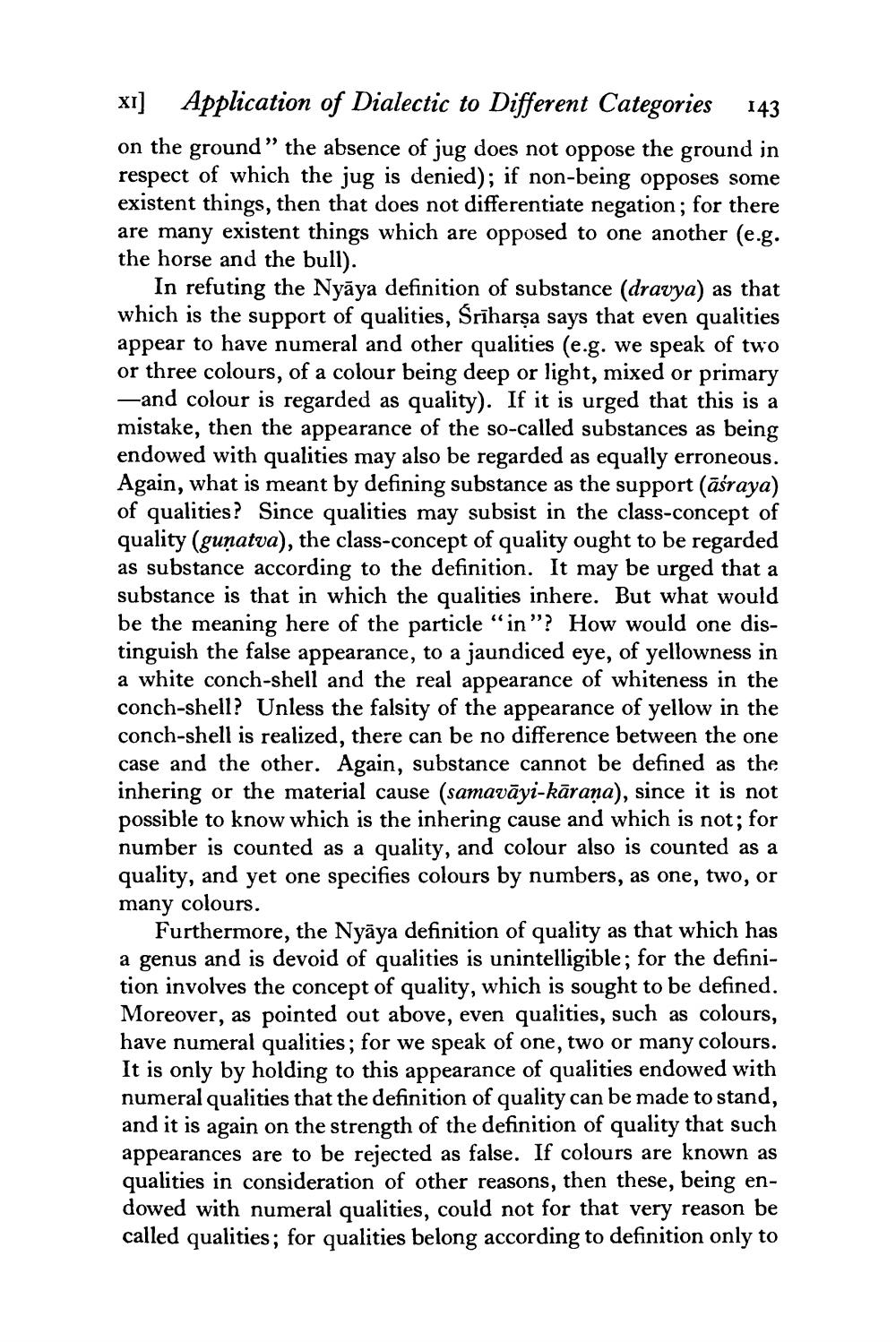________________
XI] Application of Dialectic to Different Categories 143 on the ground" the absence of jug does not oppose the ground in respect of which the jug is denied); if non-being opposes some existent things, then that does not differentiate negation; for there are many existent things which are opposed to one another (e.g. the horse and the bull).
In refuting the Nyāya definition of substance (dravya) as that which is the support of qualities, Srīharşa says that even qualities appear to have numeral and other qualities (e.g. we speak of two or three colours, of a colour being deep or light, mixed or primary
—and colour is regarded as quality). If it is urged that this is a mistake, then the appearance of the so-called substances as being endowed with qualities may also be regarded as equally erroneous. Again, what is meant by defining substance as the support (āśraya) of qualities? Since qualities may subsist in the class-concept of quality (gunatva), the class-concept of quality ought to be regarded as substance according to the definition. It may be urged that a substance is that in which the qualities inhere. But what would be the meaning here of the particle "in"? How would one distinguish the false appearance, to a jaundiced eye, of yellowness in a white conch-shell and the real appearance of whiteness in the conch-shell? Unless the falsity of the appearance of yellow in the conch-shell is realized, there can be no difference between the one case and the other. Again, substance cannot be defined as the inhering or the material cause (samavāyi-kārana), since it is not possible to know which is the inhering cause and which is not; for number is counted as a quality, and colour also is counted as a quality, and yet one specifies colours by numbers, as one, two, or many colours.
Furthermore, the Nyāya definition of quality as that which has a genus and is devoid of qualities is unintelligible; for the definition involves the concept of quality, which is sought to be defined. Moreover, as pointed out above, even qualities, such as colours, have numeral qualities; for we speak of one, two or many colours. It is only by holding to this appearance of qualities endowed with numeral qualities that the definition of quality can be made to stand, and it is again on the strength of the definition of quality that such appearances are to be rejected as false. If colours are known as qualities in consideration of other reasons, then these, being endowed with numeral qualities, could not for that very reason be called qualities; for qualities belong according to definition only to




